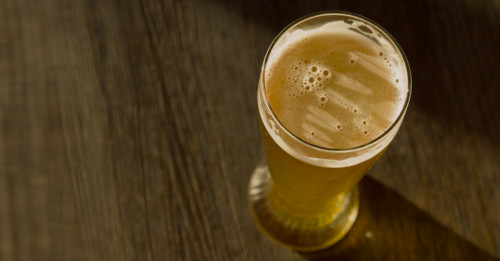“Bock” might seem like just another word thrown into the mix to confuse the beer-loving masses. But it’s actually old—centuries old—a style named for Einbeck, the place in Germany where it was born. Originally brewed between in the 14th century as an ale, bock was adopted as a lager when lager yeast first came to Germany, and the rest is sudsy history. The style does have some variations (see below), but one thing you can quickly commit to memory is that bock = strong beer.
Bock Essential Info
- Color: Copper to rich brown
- ABV: 5.5%-7.5%
- Commercial Examples: Shiner Bock, Samuel Adams Winter Lager, Anchor Bock Beer
The original style, straight Bock is a malty, robust beer that originated in the Einbeck region of Germany more than a few centuries ago. And while brewing technologies may have changed meanwhile (and Bock shifted from ale to lager), the bock from several centuries ago is the bock we know and love today. Munich and Vienna malts are co-stars here, putting on a robust, malty show that’s less roasty than round, with some toast and almost savory caramel flavors. Hops aren’t doing much here but holding up the heft of the malt, and balancing out the lingering sweetness.
Doppelbock Essential Info
- Color: Deep gold to very dark brown
- ABV: 7%-11%
- Commercial Examples: Paulaner Salvator Doppelbock, Troegs Troegenator Doppelbock, Spaten Optimator, Bell’s Consecrator Doppelbock
The “liquid bread” of the beer world, Doppelbock was first created by 17th Century Paulaner monks, who began brewing a hyper-malted beer—think “grain in a glass”—to drink during their Lenten fasts. Fast forward a few centuries (add one Papal blessing) and Doppelbock remains among the most hearty, power-packing beers there is. Like a Bock, but “double,” which is to say even higher in terms of strength and flavor, Doppelbocks can be either pale or dark, with pale versions brewed with Munich and lighter Pilsner malts and dark versions brewed with Munich and Vienna malts. Lighter versions might showcase a bit more in the way of hops, but you’re never going to find a “hoppy” Doppelbock. This is a malt-bomb, the good kind, with flavors of toast, caramel, toffee, raisins, prune, and chocolate (the darker flavors show up in the dark versions). Hops are there for balance, and even with them you’ll get a lingering sweetness and some warm alcohol in a big, brawny bearhug of a beer. No wonder the first Paulaner Doppelbock was called “Salvator” (Savior).
Maibock/Helles Bock Essential Info
- Color: Deep gold
- ABV: 6%-8%
- Commercial Examples: Hofbräu Maibock, Smuttynose Maibock, Einbecker Mai-Ur-Bock
Veering in the opposite direction of the Doppelbock, where everything gets reverently dark and intense, the Maibock or Helles Bock is like a lightened Bock—as in Munich Helles Lager, “helles” means “light.” Made with lighters Pilsner malt with Vienna and Munich malts, the Maibock is even light enough for a certain degree of hoppiness to show through. The malts still give a nice toast, bready malt quality but pepperiness and bitterness from Noble hops also get a chance to show through. A beer commonly associated with spring in Germany, because of its lighter bock profile, it still packs a fairly decent ABV punch. (Remember, bock=strong beer.)
Eisbock Essential Info
- Color: Ruby to very dark brown
- ABV: 9%-15%
- Commercial Examples: Schneider Aventinus Weizen-Eisbock, Kulmbacher Reichelbräu Eisbock, Redhook Eisbock 28
If bock=strong beer, Eisbock=strong bock. Brewed as a Doppelbock, an Eisbock (or “ice bock”) is made by freezing the beer until some of the water begins to freeze (water has a higher freezing point than alcohol). That ice is skimmed off and the resulting brew is stronger. Flavor, body, and alcohol content are all concentrated, with a big presence from malts that’s balanced more by the high alcohol content than any hops (which are barely detectable).
